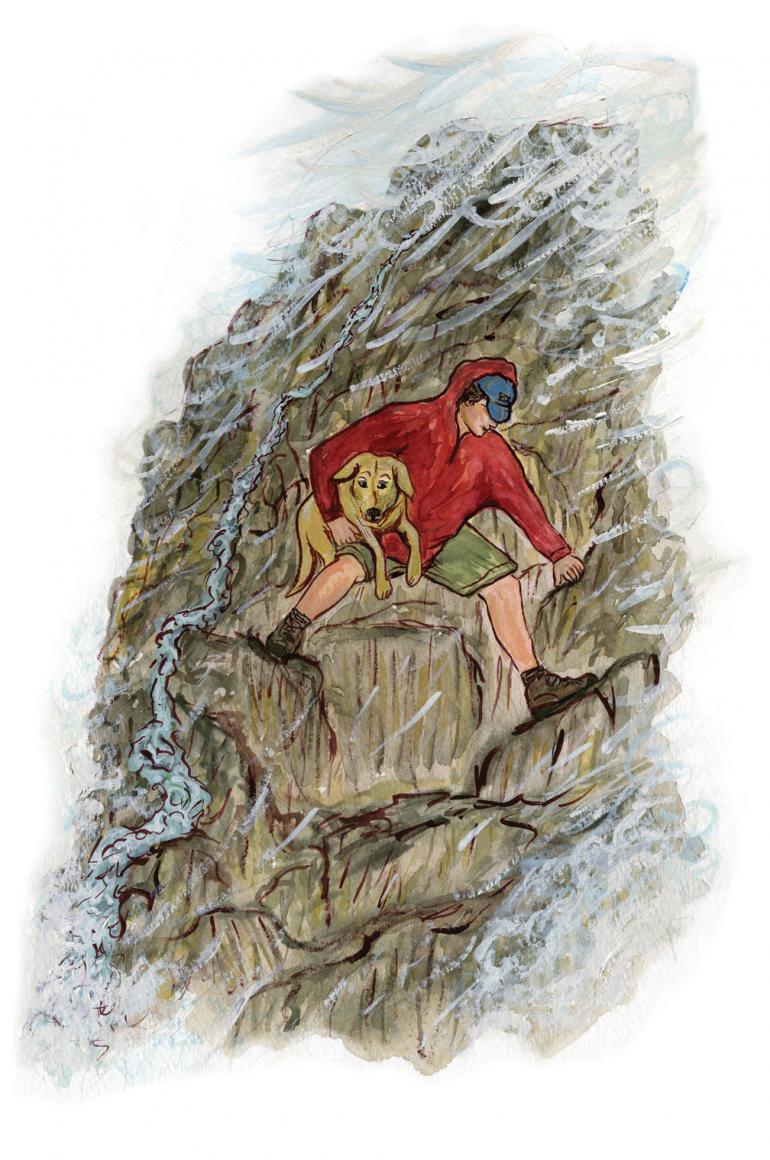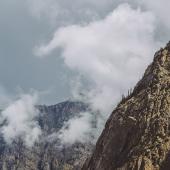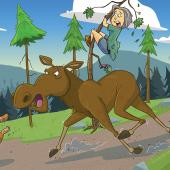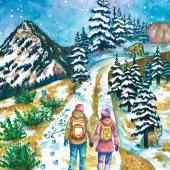Lost in the Beartooths
A high-alpine misadventure.
Like the fabled mountain man Jim Bridger once quipped, “I can’t ever remember being lost, but I do recall being considerably confused for a few days.”
I can attest to not knowing exactly where I have been on a number of occasions, but the only time I really felt lost was several years ago on a day hike in the Beartooths. The Beartooths are an extremely rugged range with plateaus of 10,000 feet or higher, cut with deep and rocky side canyons. The plateaus are above treeline and as such are barren, treeless, and windswept. They make for spectacular walking and incredible views during good weather, but they offer scant protection when the weather turns bad, which it does rather regularly.
On a beautiful Labor Day weekend, I set out for a hike across the Red Lodge plateau just northeast of Yellowstone Park. I started out early on a circular route up the Mary Creek drainage to the top of the plateau, a climb of about 3,000 feet. I planned to walk about six miles across the plateau before dropping down the Sienna Creek drainage, where I left my truck.
The weather was perfect—mid-70s and not a cloud in the sky. I took only a light lunch, a poncho, and a wool sweater. As was usual on easy hikes, my lab accompanied me. The morning was glorious but at about 2pm—when I was on the highest and most exposed part of the plateau—the clouds started to roll in and a light drizzle began. Still, I wasn’t worried. I was more than halfway through the hike, and it was all downhill to my vehicle. At lower elevations, trails in the Beartooths are typically well marked and easy to follow; however, on the high plateaus they become faint or nonexistent. Where the trail is not discernable, rock cairns generally mark the path every 50 to 70 yards. They work quite well in clear weather, but that early September day, as the weather continued to deteriorate, I began to think that things might not turn out as planned.
The temperature dropped steadily, and the wind and rain, which soon turned to a cold sleet, intensified. Still, I was getting closer to treeline and the actual trail. However, within ten minutes, the clouds lowered and I could see no more and than 100 feet in front of me—often less. I could no longer make out the cairns or other landmarks. Soon I was totally disoriented.
I stopped to assess the situation. I put my small daypack down (which contained my lunch, map, and compass) and went to reconnoiter the best route off the plateau. Big mistake! When I went to retrieve the pack, I realized I didn’t have the slightest idea where it was, nor could I see more that 20 yards in any direction.
The weather continued to worsen, and I had absolutely no shelter. I was still well above treeline and totally exposed to the increasingly heavy wind, rain, and sleet. The temperature dropped to around 30 degrees, creating a textbook hypothermia situation. And without my map and compass, I had no idea how to get off the plateau. It began to dawn on me that I was lost.
By now I was in a survival situation, and if I didn’t get to a lower elevation soon and find some sort of shelter I was in real trouble. After wandering around in the dense fog and sleet for about 20 minutes, I came to a small stream—just a rivulet really, but I reasoned it had to flow off the plateau at some point. I started to follow it downstream, hoping that it would lead below treeline. But after following the stream for a short distance, it became obvious that it would also plummet down a dangerously steep, rocky, and slippery sidecut in the plateau wall.
Staying on the exposed plateau was not an option. My lab was following me faithfully, but now she was whimpering and showing even more apprehension about the route than I did.
As I descended, the defile became steeper and more rugged. The side walls—where I could glimpse them through the fog and snow—loomed dark and ominous like some landscape out of Mordor in the Lord of the Rings trilogy. The stream continued to snake and tumble its way through and over the talus, boulders, and more and more deadfall.
Many spots were difficult for me to get across, but they were impossible for a dog to negotiate. I ended up pulling, shoving, and literally carrying my lab over obstacles almost constantly. Any slip or misstep could have resulted in a fall and serious injury. Even a minor injury, such as a twisted or sprained ankle, could have created a life-threatening situation. By now I was certain I was nowhere near the route I had described in a note at home. If something did happen to me, no one would be looking for me here.
After about three hours of exhausting, wet, and frustrating scrambling, the terrain began to level out and I reached tree line. At about 6:30pm, I found a large spruce with low, thick branches—the kind you make forts under when you were a kid. It turned out to be the perfect shelter—dry and out of the wind, which was now blowing down the canyon at gale force. I immediately crawled under the lowest branches with the dog close behind.
The storm continued to intensify, and evening was quickly closing in. The combination of the weather, approaching darkness, and my exhaustion made for no chance of continuing, so I tried to get as comfortable as possible by covering myself with spruce bows and huddling next to my dog—who gave off a surprising amount of warmth (and somewhat redeeming herself for having to haul her off the plateau). Surprisingly, I actually slept through most of the night. Four new inches of snow greeted me when I emerged from under the tree at first light.
It was still snowing as I headed down the wide and gentle canyon. After a couple of hours I picked up a faint hiking trail. As the elevation dropped, the snow began to diminish. The trail became more distinct and eventually ended at a dirt road, which I followed for several more miles until I came to an area of summer homes. One had smoke coming out of the chimney, which made for one of the more pleasant views I’ve had in my hiking career, and I didn’t think twice about approaching. After graciously being admitted inside and given coffee and chocolate, I discovered that I had descended the east face of the plateau rather than the south side (my intended route) and was nearly 30 miles by road from where I had intended to end the hike.
In retrospect, I obviously did some things wrong. I should have gotten an accurate weather report rather than just assuming the weather would hold, especially given that the Beartooths are high enough and large enough that they can create their own weather. I should have prepared for severe weather with more than just a sweater and poncho. Of course, leaving my lunch, map, and compass behind certainly didn’t help things, although I’m not sure how much good they would have done with such poor visibility.
Taking the lab was a debatable move. Admittedly, carrying her over the rocks and deadfall during the descent off the plateau was dangerous. But she was better company in the situation than some of my regular hiking companions might have been.
I also did some things right. I didn’t panic. Consequently, I made the right decision to follow the stream off the plateau and eventually find shelter below treeline. Upon finding adequate shelter, I had the presence of mind to take advantage of it rather than push on through the night.
By thinking the situation through and with a little luck, what could have been a disastrous and tragic event turned out to be merely an uncomfortable and long (but educational) evening. The worst part came the next day when I had to explain my absence at work by admitting I got lost. Those things, I found, take a long time to live down.












